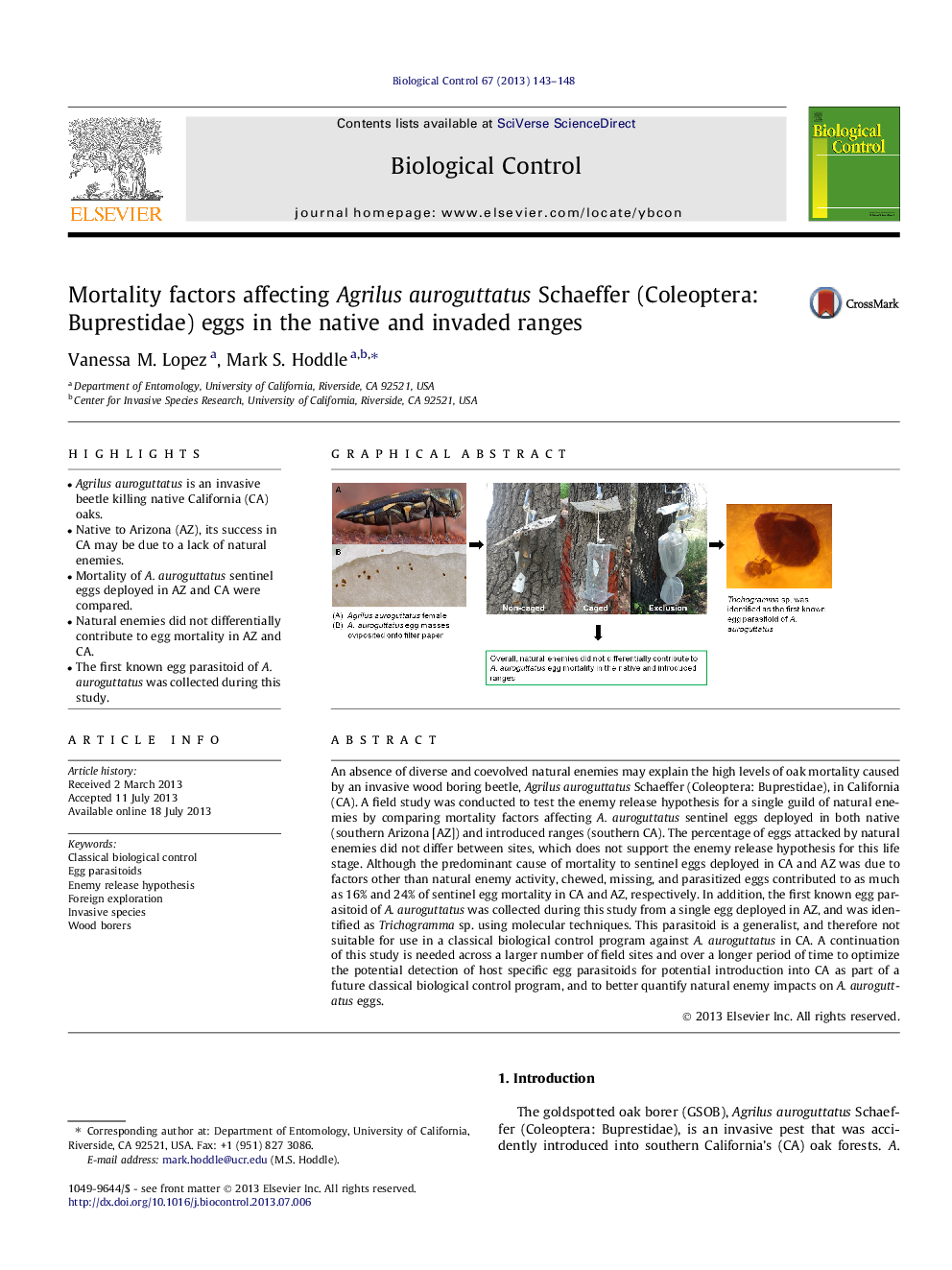| کد مقاله | کد نشریه | سال انتشار | مقاله انگلیسی | نسخه تمام متن |
|---|---|---|---|---|
| 4504044 | 1321054 | 2013 | 6 صفحه PDF | دانلود رایگان |

• Agrilus auroguttatus is an invasive beetle killing native California (CA) oaks.
• Native to Arizona (AZ), its success in CA may be due to a lack of natural enemies.
• Mortality of A. auroguttatus sentinel eggs deployed in AZ and CA were compared.
• Natural enemies did not differentially contribute to egg mortality in AZ and CA.
• The first known egg parasitoid of A. auroguttatus was collected during this study.
An absence of diverse and coevolved natural enemies may explain the high levels of oak mortality caused by an invasive wood boring beetle, Agrilus auroguttatus Schaeffer (Coleoptera: Buprestidae), in California (CA). A field study was conducted to test the enemy release hypothesis for a single guild of natural enemies by comparing mortality factors affecting A. auroguttatus sentinel eggs deployed in both native (southern Arizona [AZ]) and introduced ranges (southern CA). The percentage of eggs attacked by natural enemies did not differ between sites, which does not support the enemy release hypothesis for this life stage. Although the predominant cause of mortality to sentinel eggs deployed in CA and AZ was due to factors other than natural enemy activity, chewed, missing, and parasitized eggs contributed to as much as 16% and 24% of sentinel egg mortality in CA and AZ, respectively. In addition, the first known egg parasitoid of A. auroguttatus was collected during this study from a single egg deployed in AZ, and was identified as Trichogramma sp. using molecular techniques. This parasitoid is a generalist, and therefore not suitable for use in a classical biological control program against A. auroguttatus in CA. A continuation of this study is needed across a larger number of field sites and over a longer period of time to optimize the potential detection of host specific egg parasitoids for potential introduction into CA as part of a future classical biological control program, and to better quantify natural enemy impacts on A. auroguttatus eggs.
Figure optionsDownload as PowerPoint slide
Journal: Biological Control - Volume 67, Issue 2, November 2013, Pages 143–148